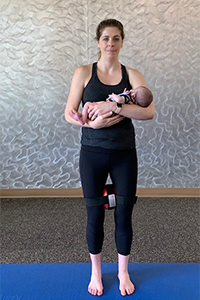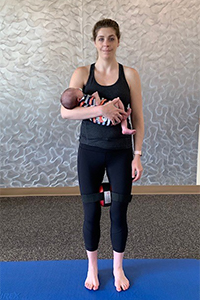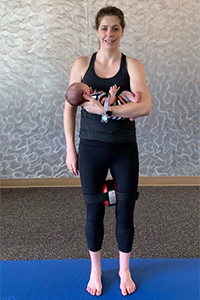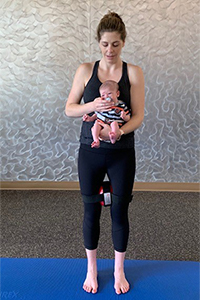
The Fourth Trimester: The Birth of a Mother
Leave a CommentIn the weeks following the birth of a baby, a new mother emerges. The fourth trimester used to be defined as the first six weeks postpartum. This period was also known as a singular event, only being addressed at the six-week checkup. The visit would consist of a depression screening, evaluation of the cervix, uterus, cesarean birth scar/episiotomy scar, family planning/birth control and discussion of breast/bottle feeding. In recent years this has changed – and for good reason.
New Guidelines for the Fourth Trimester
In May 2018, The American College of Obstetricians and Gynecologists (ACOG), Women’s Health Care Physicians redefined the fourth trimester.3 ACOG now recognizes that the weeks following birth are a critical period for the new mother and her baby, laying the foundation for long-term health and wellness. To ensure the health of the mother and baby, postpartum care should be an ongoing process instead of a single visit. This ongoing care should be comprehensive and occur as soon as needed or at least 2 weeks postpartum, but no later than 12 weeks postpartum.
Physical Therapy for Pregnancy and Postpartum
As a physical therapist who specializes in pregnancy and postpartum health, I view the first 12 months following birth as a critical time for both the mother and baby. However, many times the health and wellness of the mother is not fully addressed beyond the basics.1
Many women may experience orthopedic injuries or pelvic floor dysfunction during pregnancy, at the time of labor and delivery, or in the postpartum period. For women, it is important to discuss “anything that does not feel right” with their physician or physical therapist. For example, postpartum pain is something that should always be addressed. Although initial pain may be experienced when resuming sexual activity, it should not be considered normal if it continues past the first three months postpartum. Additionally, urinary incontinence should not be considered normal even though it may occur during the postpartum period.2
At Athletico, our women’s health physical therapists have specialized training to provide comprehensive care throughout the perinatal period. This includes helping prepare women for labor and delivery, as well as providing restorative care in the fourth trimester. During the fourth trimester, our experts may address common dysfunctions experienced in the postpartum period, as well as take an assessment of the mother’s movement patterns. Questions will help to determine any level of pelvic floor dysfunction. Suggestions for a comprehensive return to exercise will be discussed, including baby care to optimize the mother’s biomechanics.
An example of a fourth trimester exercise is the Baby Rock Matrix with varying baby holds! Starting with the feet hip width apart, gently squeeze a ball between the thighs, move the hips forward/backward, side to side and turn the whole body right and left. Perform each motion 3-5 times and vary the position of holding the baby. This can be performed 1-3 times a day. The mother’s pelvic core neuromuscular system is activated while the baby receives vestibular stimulation in different positions. A win-win situation for both baby and mother!




Choose Athletico
If you are currently pregnant or recently delivered, schedule a free assessment with an Athletico women’s health specialist. Our team will conduct an assessment and provide recommendations for next steps throughout pregnancy and the fourth trimester.
Athletico is now offering free assessments in-clinic or virtually through telehealth.
The Athletico blog is an educational resource written by Athletico employees. Athletico bloggers are licensed professionals who abide by the code of ethics outlined by their respective professional associations. The content published in blog posts represents the opinion of the individual author based on their expertise and experience. The content provided in this blog is for informational purposes only, does not constitute medical advice and should not be relied on for making personal health decisions.
References:
1. Tully, K. P., Stuebe, A. M., & Verbiest, S. B. (2017). The fourth trimester: a critical transition period with unmet maternal health needs. American Journal of Obstetrics & Gynecology, 217(1), 37-41.
2. Mannion, C. A., Vinturache, A. E., McDonald, S. W., & Tough, S. C. (2015). The Influence of Back Pain and Urinary Incontinence on Daily Tasks of Mothers at 12 Months Postpartum. PLoS ONE, 10(6), e0129615.
3. Committee on Obstetric Practice, Stuebe, A., Auguste, T., Gulati, M., (May 2018) ACOG Committee Opinion- Optimizing Postpartum Care. Obstetrics & Gynecology. 131 (5)e140-150.
